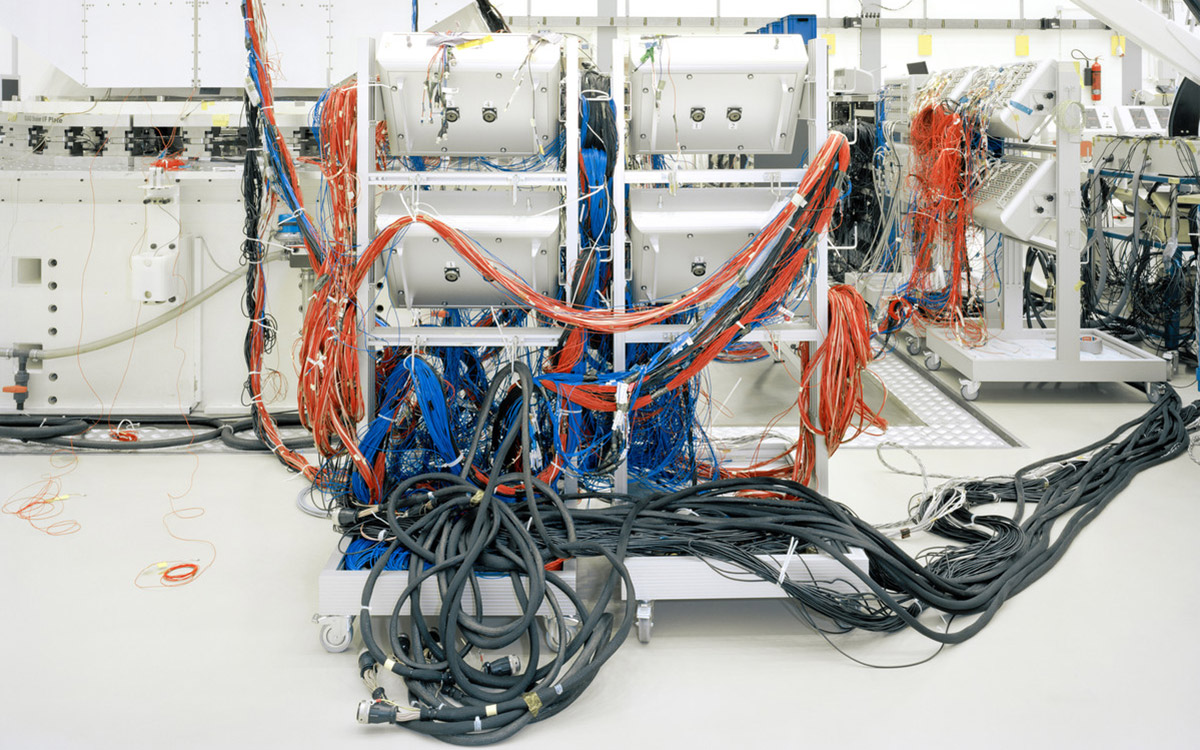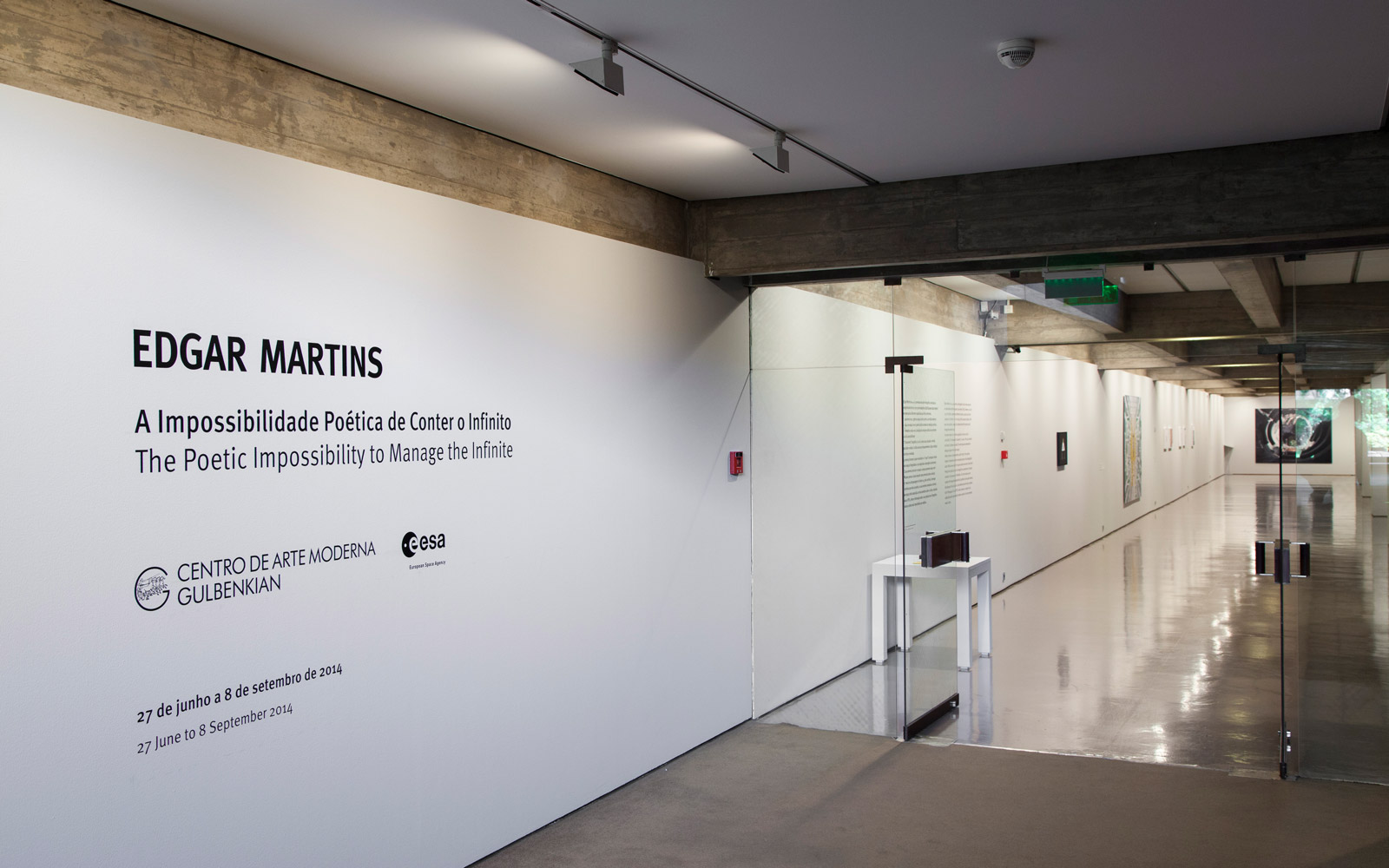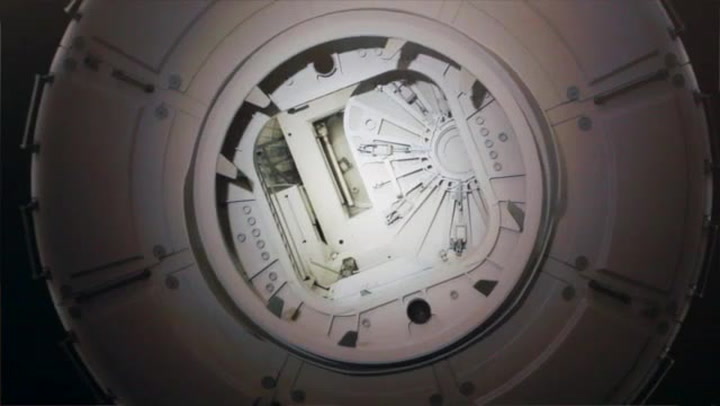Spatial utopia

Edgar Martins’ work leads us to consider a geopolitics of secrecy and (in)accessibility. At the ESA (European Space Agency) sites visited by the artist in nine different countries spread over three continents, according to a protocol that enthusiastically welcomed the project, negotiation was constant and access, though real, was not always totally obvious. This underlines the fact that, for the vast majority of us, these are places that are totally impenetrable, mapping out a network of loci of necessarily political and secret experimentation and decision-making at the highest level across the planet. The photographic ‘document’ is – or was, in this case – desired and feared, facilitated and avoided. The artist embodied the ambiguous figure of the invited intruder.
There is no one (or very rarely anyone) in these images, and the ‘body’ of the machine imposes its magnitude and all-encompassing nature on the photographed spaces. The series features images of densely packed interiors, filled with wires, hoses, cables, electrical and electronic devices, articulated arms, batteries, containers, diagrams, simulators, buttons, modules, accelerators, generators, aerials, computers, rockets, satellites, models, pieces, robots… Laboratory components and objects from a science museum.


As Geoff Dyer says in relation to another series, ‘there is sometimes no sense of scale’. In the case of this work, the gaze is drawn to machines and cables as uninteresting and unfamiliar as holders of possible visual plasticity.
We know that the mirage of progress was bound up with the utopia of space, yet we also know that the second half of the twentieth century, and postmodernity in particular, vigorously questioned the link between the idea of the future and progress, and we can also allow ourselves to think of the utopia of space as a dystopia, as the perversion of a (human) condition in its transcending of limitations and undertaking of possibly unjustifiable efforts. ‘It has always been my intention to be able to merge, in an emotive and realist work, a documentary and conceptual aspect, framed in a reflective analysis of the photographic medium and different forms of visual representation’, explains Martins.

The ambiguity between the critical point of view and the fascination with technological utopia/dystopia was at the heart of the debate I had with the artist during the production of the exhibition The Poetic Impossibility to Manage the Infinite (2014, in the gallery on the lower floor of the FCG main building), which I curated. In the text I wrote for the catalogue, ‘The Poetic Quality of the Infinite’, I question this fascination: do we admire or fear the ambition of space conquest?
Guided tour of the exhibition ‘Edgar Martins. The Poetic Impossibility to Manage the Infinite’, with artist Edgar Martins and curator Leonor Nazaré, 2014
Leonor Nazaré
Curator of the CAM
Curators’ Choices
The curators of the CAM reflect on a selection of works, which include creations by national and international artists.
More choices
